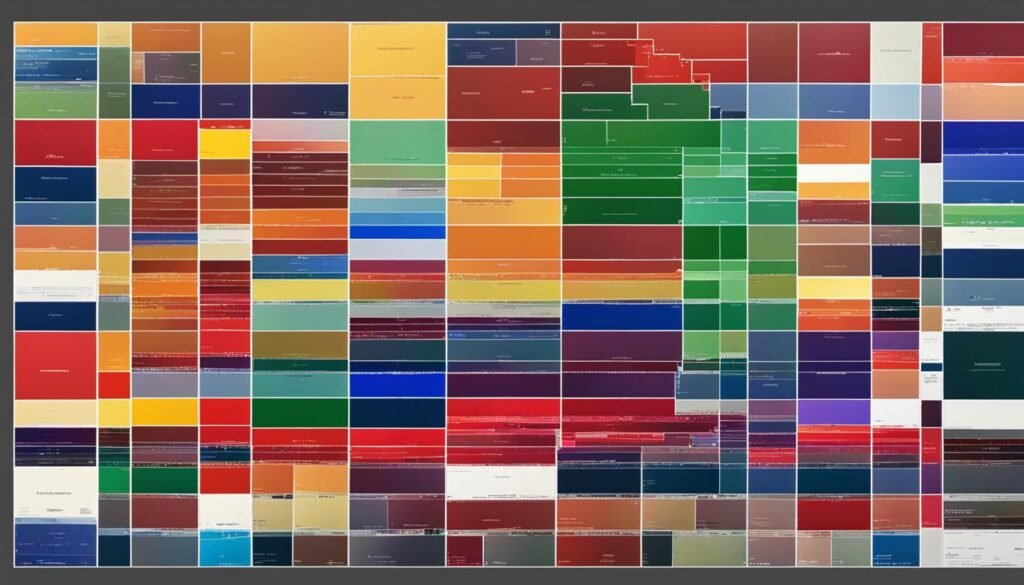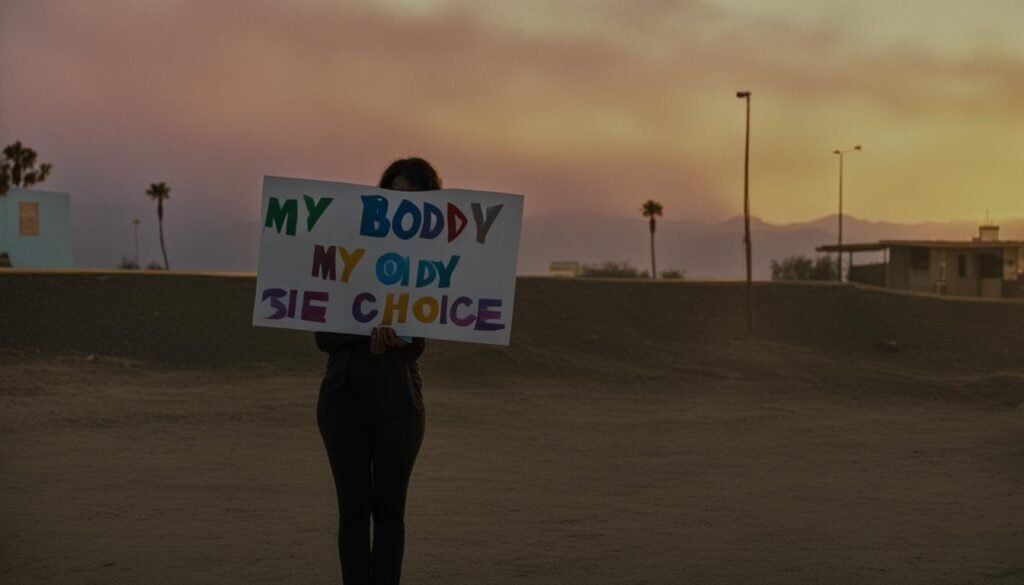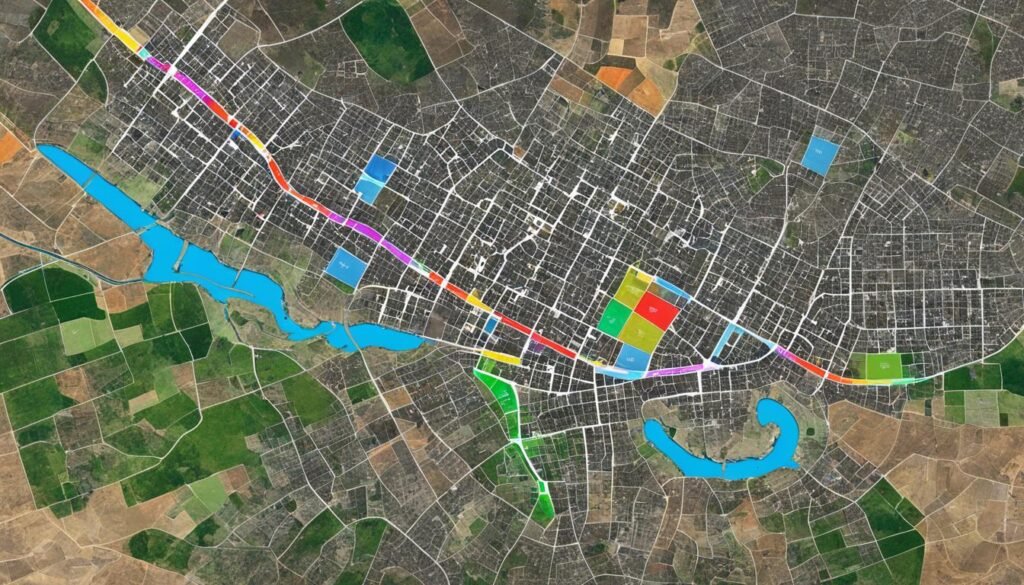As a journalist, I am constantly intrigued by the dynamics of politics and how it shapes the state of California. Today, I bring you an insightful look into the political party preferences among registered voters in California. The diversity of political affiliations in the Golden State is a fascinating subject, and the latest data from the California Secretary of State sheds light on this intriguing topic.
According to the most recent data, there are approximately X registered voters in California, with the majority aligning themselves with either the Democratic, Republican, or Independent party. This diverse range of party preferences contributes to the rich and multi-faceted political landscape in the state.
Key Takeaways:
- California has a diverse range of political party preferences among registered voters.
- The majority of registered voters in California align themselves with the Democratic, Republican, or Independent party.
- Understanding the demographics and political affiliations of California voters is crucial in comprehending the state’s political landscape.
- Analyzing party registration numbers over time can provide valuable insights into shifting political preferences.
- Exploring the influence of independent parties and third-party affiliations adds depth to the political landscape of California.
California Voter Trends and Demographics
When it comes to California party affiliation, understanding the voter trends and demographics is crucial. A recent study conducted by the California Secretary of State sheds light on the party affiliation breakdown among registered voters in the state.
The study reveals that a significant portion of registered voters in California identify as Democrats, followed by Republicans and Independents. This reflects the diverse political landscape within the state. By analyzing the data by demographic factors such as age, gender, and ethnicity, valuable insights into voting patterns and preferences emerge.
Examining the demographics of California voters provides a deeper understanding of the state’s political dynamics. It helps unveil the factors that influence party affiliation and how they shape the political landscape of California. By analyzing the registered voters in California by party, we gain insight into the distribution of party affiliations across different demographics.

Through this study, we can better comprehend the party affiliation in California and the role it plays in elections and policy-making. It allows us to make informed assessments of the political party preferences and understand the varying perspectives and priorities held by California voters.
California Political Parties and Their Impact
Within the political landscape of California, several major political parties wield significant influence over the state’s policies and elections. The Democratic Party, Republican Party, and various third-party political affiliations all play a crucial role in shaping the political climate of California.
Understanding the ideologies and priorities of each party is key to gaining insight into the choices made by California voters. The Democratic Party, historically aligned with progressive values, advocates for social justice, healthcare reform, and environmental protection. On the other hand, the Republican Party, known for its conservative stance, emphasizes fiscal responsibility, limited government intervention, and personal freedoms.
Additionally, various third-party political affiliations exist in California, offering alternative platforms and perspectives. These third-party parties range from the Green Party, which promotes environmentalism and social justice, to the Libertarian Party, which advocates for minimal government intervention and personal liberties. Exploring the impact of these parties on California politics provides a comprehensive understanding of the diverse political landscape within the state.
By analyzing the policies, positions, and track records of the California political parties, voters can make informed decisions based on their personal beliefs and values. The choice of the “best” political party in California ultimately depends on an individual’s political affiliation, priorities, and alignment with the respective party’s platform.

The Democratic Party:
- Pragmatic and progressive policies
- Emphasis on social justice and equality
- Advocacy for healthcare reform and environmental protection
- Historically strong presence in California politics
The Republican Party:
- Conservative ideology with limited government intervention
- Support for fiscal responsibility and personal freedoms
- Emphasis on law and order and national security
- Historically influential in certain regions of California
Third-Party Political Affiliations:
- Green Party: Focus on environmentalism and social justice
- Libertarian Party: Emphasis on personal liberties and limited government
- Independent Party: Offers an alternative platform for voters
Understanding the impact of each California political party and the values they represent is essential for navigating the state’s political landscape. By staying informed and actively participating in the democratic process, voters can contribute to shaping the future of California.
The Influence of Party Registration on California Politics
The registration of voters by party is an essential aspect of California politics. It plays a crucial role in shaping the allocation of resources, campaigning strategies, and electoral outcomes within the state. By examining the trends in political party registration over time, we can gain valuable insights into the shifts in political preferences and identify potential factors that contribute to these changes.
Political party affiliation is an important indicator of a voter’s ideology and voting behavior. When individuals register with a particular party, they demonstrate their support and align themselves with the party’s values and policy positions. This affiliation also enables political parties to target specific voter segments during elections and mobilize their base. Understanding the distribution and growth of party registration in California is key to understanding the dynamics of the state’s political landscape.
Over the years, various factors have influenced the party registration numbers in California. These could include changing demographics, economic conditions, political events, and shifts in public opinion. By closely analyzing these trends, we can observe how political parties adapt their strategies to attract and retain registered voters, as well as how voter sentiments and external factors impact party registration.

Party registration data also influences the allocation of resources for political campaigns. Candidates and parties often focus their efforts on registered voters from their own party, as these individuals are more likely to support their candidacy. By understanding the distribution of party registration across different regions of California, campaigns can target their resources more effectively and tailor their messaging to appeal to their desired voter base.
Additionally, party registration numbers can impact electoral outcomes in California. The proportion of registered voters affiliated with a particular party can provide insights into the partisan leanings of different districts and regions. This knowledge can guide candidates, parties, and political analysts in predicting election results and forecasting the performance of political campaigns.
By examining the influence of party registration on California politics, we gain a deeper understanding of the dynamics that shape the state’s political landscape. It allows us to comprehend the factors that drive voter behavior, influence policy decisions, and shape the outcomes of elections. Through a comprehensive analysis of party registration trends, we can uncover valuable insights into the ever-evolving political preferences of California voters.
California Independent Party and Third-Party Affiliations
Beyond the major political parties, California boasts a vibrant landscape of independent parties and third-party affiliations. These organizations offer alternative platforms and ideologies for voters who seek alternatives to the Democratic and Republican parties.
Whether it’s the California Green Party, the Libertarian Party, or other third-party affiliations, these organizations play a crucial role in shaping the political discourse and providing options to those who may not align with the mainstream parties.
California Independent Party
One notable independent party in California is the California Independent Party, which advocates for a more centrist approach to governance. It provides voters with an alternative option that strays from the traditional left-right spectrum, emphasizing fiscal responsibility and social tolerance.
The California Independent Party has seen a rise in popularity over the years, garnering support from voters who value pragmatism and compromise over rigid party ideologies. As a result, its influence on California politics continues to grow.
Third-Party Affiliations
In addition to the California Independent Party, there are several other third-party affiliations in the state. These parties represent a wide range of ideologies, from the socially progressive Green Party to the fiscally conservative Libertarian Party.
Third-party affiliations provide voters with an opportunity to express their specific policy preferences and challenge the dominance of the two major parties. While they may not always secure electoral victories, their presence encourages a more robust and inclusive political discourse in California.
The image above illustrates the diversity within California’s independent parties and third-party affiliations, symbolizing the multiplicity of voices and perspectives within the state’s political landscape.
By exploring the influence and presence of these independent parties and third-party affiliations, we gain a deeper understanding of the intricate tapestry that is California politics. This comprehensive perspective allows us to appreciate the diversity of ideas and values that shape the state’s future.
The Role of Party Preference in California Elections
Party preference plays a vital role in shaping the outcome of elections in California. As voters make their candidate choices, their party affiliations often influence their decisions, policy preferences, and voting behavior. By understanding how party preference impacts election outcomes in different regions of California, we can gain valuable insights into the state’s political dynamics and effectively predict future trends.
Throughout California, voters have a range of political party choices that represent diverse ideologies and priorities. The Democratic Party, Republican Party, and various third-party affiliations all contribute to the rich political landscape of the state. Analyzing the influence of these political parties provides a deeper understanding of the choices made by California voters and the factors that shape the state’s political environment.
Examining the role of party preference in California elections allows us to explore the correlations between voter demographics and party affiliations. As we delve into the distribution of political party preference across different regions and communities, we gain valuable insights into the dynamics of California’s political landscape.
The Impact of Party Preference on Candidate Choices and Policy Preferences
Party preference significantly influences not only the candidate selection process but also the policy preferences of voters. party affiliations often align with specific ideologies and policy platforms, which guide voters in their decision-making process. For example, Democratic Party supporters in California typically lean toward progressive policies, while Republican Party supporters tend to align with conservative principles. The party preference lenses through which voters view candidates’ positions and proposals, further solidifying the impact of party preference on voting behavior.
Moreover, party preference is closely linked to voter turnout and engagement. Voters who strongly identify with a particular party are more likely to actively participate in the electoral process. They are motivated to support candidates from their preferred political party, volunteer for campaigns, and advocate for policy positions aligned with their party’s platform. Understanding these patterns of party preference and voter engagement is essential for political parties to strategize their outreach efforts and connect with their base effectively.
The Future Trends of Party Preference in California
By analyzing historical data on party preference and understanding the evolving demographics of the state, we can make informed predictions about future party trends in California. As the population continues to grow and diversify, the political preferences and party affiliations of California residents are likely to change. Examining these shifts can help us anticipate emerging political coalitions and adapt our strategies to meet the evolving needs and priorities of California voters.
In summary, party preference plays a crucial role in shaping California elections. It impacts candidate choices, policy preferences, and voter behavior. By closely analyzing the influence of party preference on the electoral process, we can gain valuable insights into the state’s political dynamics and predict future trends. To effectively engage voters and shape the political landscape of California, understanding and responding to party preference is essential for political parties and candidates.
The California Democratic Party and Republican Party
The California Democratic Party and the California Republican Party are the two major political forces within the state. Analyzing the platforms, strategies, and statewide influence of these parties provides valuable insights into the broader political landscape of California. Examining their electoral success, policy priorities, and voter engagement strategies can offer a deeper understanding of party dynamics in the state.
The California Democratic Party, often referred to as the CDP, is the dominant political party in the state. With a strong base of support among liberal and progressive voters, the party advocates for various policy issues such as healthcare reform, climate change measures, gun control, and social justice initiatives. The CDP has a significant presence in both state and national politics, playing a crucial role in shaping legislation and influencing public opinion.
The California Republican Party, known as the CRP, represents a conservative and right-leaning perspective within the state. The party emphasizes limited government intervention, lower taxation, and free-market economic policies. With a focus on law and order, traditional family values, and business-friendly regulations, the CRP strives to promote individual liberty and personal responsibility. While the California Republican Party faces challenges in a predominantly Democratic state, it continues to exert influence and provide a counterbalance to Democratic policies.
- The California Democratic Party:
- Champions liberal and progressive causes
- Advocates for healthcare reform, climate change measures, gun control, and social justice initiatives
- Significant presence in state and national politics
- The California Republican Party:
- Represents conservative and right-leaning perspectives
- Emphasizes limited government intervention, lower taxation, and free-market economic policies
- Focuses on law and order, traditional family values, and business-friendly regulations
Understanding the platforms, ideologies, and strategies of the California Democratic Party and the California Republican Party is essential for comprehending the state’s political landscape. These parties shape policy decisions, drive political debates, and mobilize their respective voter bases in elections. By closely examining their activities and priorities, we gain valuable insights into the political dynamics that shape California’s future.
Conclusion
In California, the political party landscape is diverse and constantly changing. To understand the state’s political dynamics, it is essential to examine the demographics, voter trends, and party affiliations. By analyzing the data on party registration, political preferences, and ideological leanings of California voters, we gain valuable insights into how political parties shape the Golden State.
The California Democratic Party and the California Republican Party are the two major political forces in the state. Their platforms, strategies, and statewide influence play a significant role in shaping California’s political landscape. Furthermore, third-party affiliations and independent parties contribute to the diversity of political options available to voters.
Party preference significantly influences California elections. Voters’ party affiliations often determine their candidate choices, policy preferences, and voting behavior. By studying how party preference affects election outcomes across different regions of California, we can gain a deeper understanding of the state’s political dynamics and predict future trends.
Political party registration is a crucial aspect of California politics. The number of registered voters by party not only affects the allocation of resources but also influences campaign strategies and electoral outcomes. Monitoring party registration trends over time helps identify shifts in political preferences and potential factors driving these changes.
FAQ
What is the political party preference among registered voters in California?
The political party preference among registered voters in California is diverse, with the majority affiliating themselves with either the Democratic, Republican, or Independent party.
How many registered voters are there in California by party?
The exact number of registered voters by party in California is not mentioned in the available data.
What are the demographics and political affiliations of California voters?
Demographic factors such as age, gender, and ethnicity play a significant role in shaping the voting patterns and preferences of California voters.
What are the major political parties in California?
The major political parties in California are the Democratic Party and the Republican Party. Additionally, there are several third-party political affiliations in the state.
How does party registration impact California politics?
Party registration numbers influence the allocation of resources, campaigning strategies, and electoral outcomes in California.
Is there an independent party in California?
Yes, there is an independent party in California, known as the California Independent Party. There are also various third-party affiliations in the state.
How does party preference affect California elections?
Party preference often determines voter candidate choices, policy preferences, and voting behavior, ultimately impacting California elections.
What are the California Democratic Party and Republican Party?
The California Democratic Party and Republican Party are the two major political parties within the state that have significant statewide influence.







